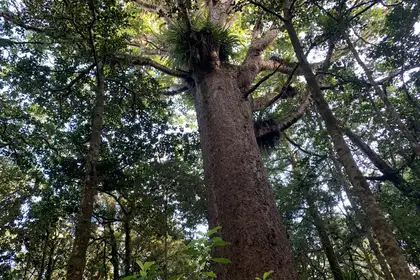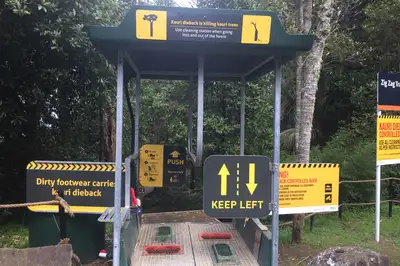
Kauri dieback is a disease threatening New Zealand's native kauri population.
This means that researchers can now use the Phytophthora agathidicida genome to identify and study the key genes that are used by the pathogen to cause disease in kauri trees, which will be an important tool in the battle against kauri dieback.
Research lead, Professor Rosie Bradshaw from Massey’s School of Natural Sciences, says the practical importance of knowing all the genes in a genome has been shown with other organisms. “For example, knowledge of the COVID-19 viral genome has been used to develop vaccines that have saved thousands of lives, to track new variants of the virus, and more.”

Professor Rosie Bradshaw.
The P. agathidicida genome is about 20,000 times as big as the genome of the virus that causes COVID-19, and it has a lot of identical 'repeat' sequences which make assembly of the genomic puzzle very challenging. But with millions of much bigger pieces, the research team took advantage of the latest advances in sequencing technology to assemble the complete genomic puzzle.
"The new genome contains all the pieces, giving the complete genetic ‘instruction manual’ for this pathogen. The genome sequence is freely available on public databases so that researchers from all around the world can use this valuable resource,” Professor Bradshaw says.
“As it is the first completely assembled Phytophthora genome, it will serve as a model genome to advance research on related Phytophthora pathogens. This is key as Phytophthora is not only a New Zealand issue, but a global one, with Phytophthora diseases causing billions of dollars in crop damages (e.g. the Irish potato famine) and ecosystem losses (e.g. Jarrah dieback) around the world."
Professor Bradshaw adds that eventually, genomic data can also help identify gene targets for disease control or generate new genetic tools for screening for natural resistance within populations of kauri.

A kauri dieback cleaning station.
This is the first chromosome-level genome assembly for any Phytophthora species in the world, and took over two years to complete. In a truly collaborative effort, the research was conducted by scientists from Plant and Food Research, Scion, Victoria University of Wellington, Oregon State University and Massey University.
The project builds upon earlier work by the Scion-based Healthy Trees Healthy Future Programme, funded by the Ministry of Business, Innovation and Employment and led by Dr Nari Williams, where a partial genome assembly of P. agathidicida was generated. This was the first genome sequence of P. agathidicida. However, like a very complex jigsaw puzzle with a lot of missing pieces, the genome was in a thousand pieces and many genes were missing.
Professor Bradshaw says that ultimately, this new genomic data will have widespread applications and impacts for kauri dieback research.
“Though this new genome sequence is not a silver bullet, it is an important tool for improving our understanding of the pathogen that causes the disease. This research complements the diverse efforts being made by a dedicated community of mana whenua, concerned citizens and scientists around the country to preserve the precious taonga kauri for our mokopuna and future generations.”
This work was funded by Ngā Rākau Taketake and the national centre of research excellence, Bioprotection Aotearoa. The full research article is online here.
Related news
Massey professor receives plant pathology honour
Professor Rosie Bradshaw has joined an elite group of plant pathologists, having been made a fellow of the Australasian Plant Pathology Society.
